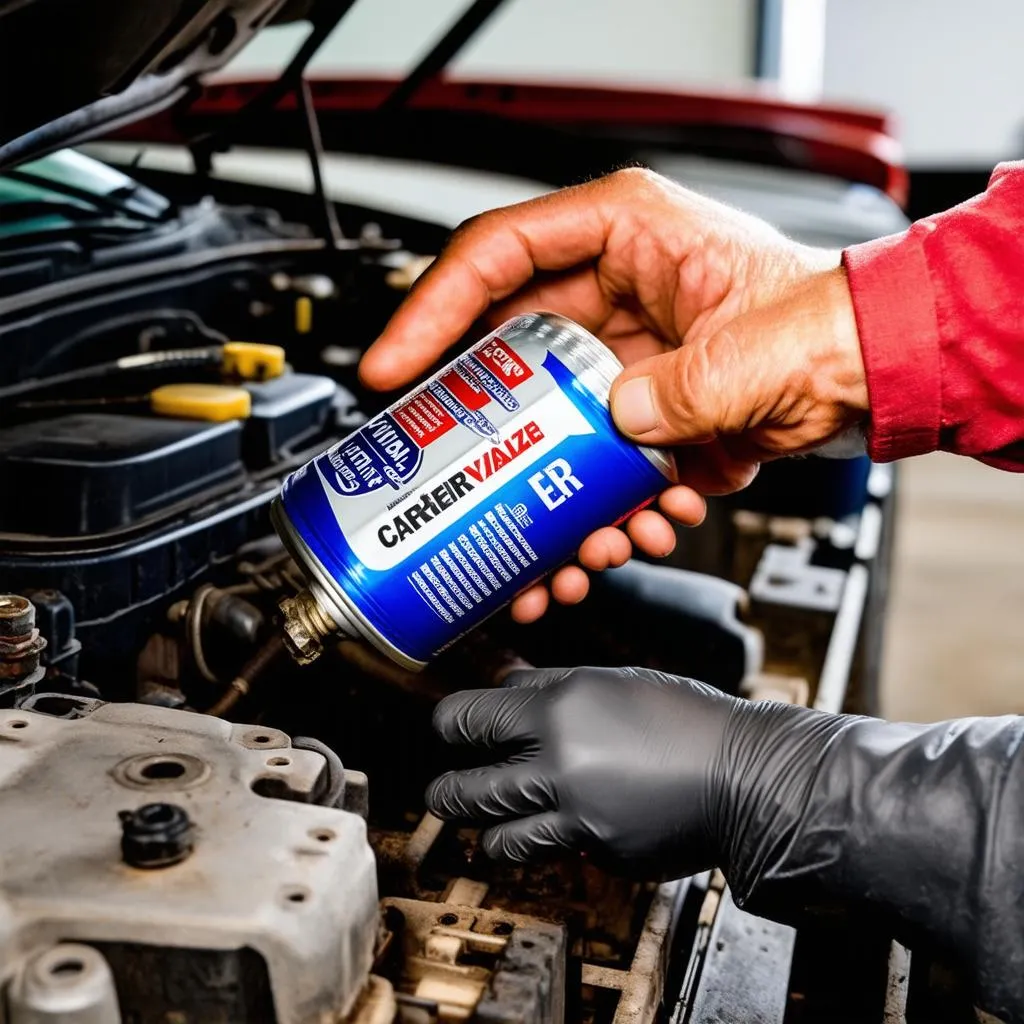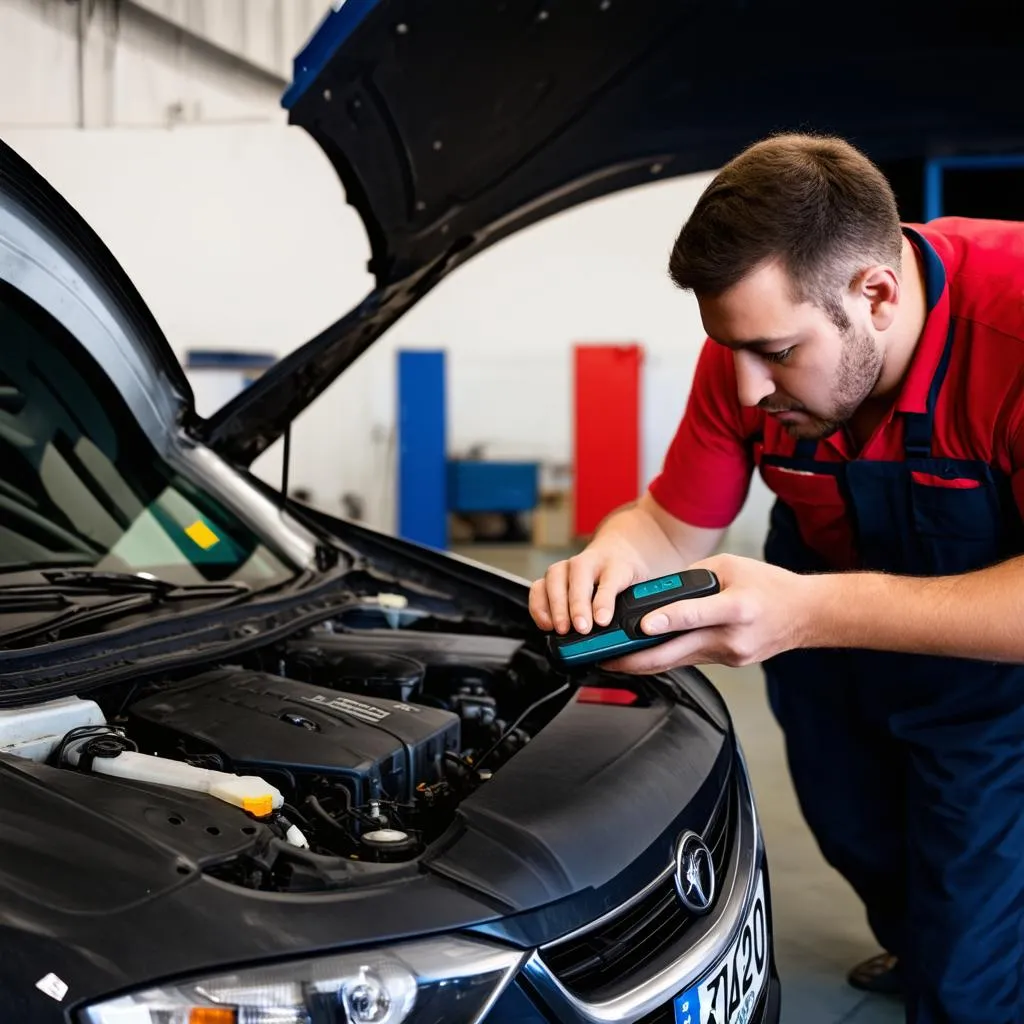“My check engine light just came on, and the code reader says it’s P0401. What in the world does that even mean?”
Sounds familiar? Don’t worry, you’re not alone. Car troubles, especially those cryptic OBD codes, can feel like navigating a labyrinth blindfolded. One minute you’re cruising down the highway, the next you’re knee-deep in automotive jargon. The dreaded P0401 is one such code that leaves many car owners scratching their heads.
This code signals a problem with your car’s Exhaust Gas Recirculation (EGR) system, a vital part of your engine’s emission control system.
What Does P0401 Really Mean?
In simple terms, the P0401 code indicates that the flow of exhaust gases being recirculated back into your engine is insufficient. Imagine a recycling system gone haywire – that’s essentially what’s happening inside your engine.
But why should you care about exhaust being recirculated in the first place?
Well, the EGR system plays a crucial role in reducing harmful nitrogen oxide (NOx) emissions, which are a major contributor to air pollution. It does this by redirecting a small amount of exhaust gas back into the combustion chamber, effectively lowering combustion temperatures and reducing NOx formation.
P0401: Causes, Symptoms, and Solutions
What Causes a P0401 Code?
Several culprits can trigger the P0401 code, ranging from simple fixes to more complex issues:
- Clogged EGR Valve: Imagine a clogged artery – that’s what a clogged EGR valve does to your engine. Carbon buildup from exhaust gases can restrict the valve’s movement, hindering proper flow.
- Faulty EGR Solenoid: This electronic component controls the opening and closing of the EGR valve. A malfunctioning solenoid can disrupt the entire EGR system.
- Vacuum Leaks: The EGR system relies on vacuum pressure to operate effectively. Any leaks in the vacuum lines can disrupt this pressure, leading to the P0401 code.
- Faulty DPFE Sensor: The Differential Pressure Feedback EGR (DPFE) sensor monitors the flow of exhaust gas through the EGR system. A faulty sensor can send incorrect signals to the engine control module (ECM), causing the P0401 code.
Symptoms of a P0401 Code
While the check engine light is a dead giveaway, other symptoms might accompany the P0401 code:
- Rough Idling: Your engine might sputter or shake when idling, especially when the engine is cold.
- Reduced Engine Performance: You might notice a decrease in acceleration power or overall engine performance.
- Increased NOx Emissions: This might not be noticeable while driving, but a failed emissions test could be an indicator.
How to Fix a P0401 Code
Before you rush to the mechanic, there are a few things you can try:
- Check for Vacuum Leaks: Inspect the vacuum lines connected to the EGR valve and related components for any cracks or loose connections.
- Clean the EGR Valve: You can often clean the EGR valve yourself with a carburetor cleaner. However, if you’re unsure, it’s best to consult a mechanic.
- Replace Faulty Components: If cleaning or inspecting the components doesn’t solve the issue, you might need to replace the EGR valve, solenoid, or DPFE sensor.
Remember, while these are common fixes, it’s crucial to properly diagnose the root cause of the P0401 code before attempting any repairs.
P0401 Obd Code: Frequently Asked Questions
Q: Can I still drive my car with a P0401 code?
A: While you might be able to drive for a short period, it’s not recommended. Ignoring the P0401 code can lead to more severe engine damage and increased emissions.
Q: How much does it cost to fix a P0401 code?
A: The cost can vary depending on the specific issue and labor costs in your area. However, repairs typically range from a few hundred dollars for simple fixes like cleaning or replacing the EGR valve to over a thousand dollars for more complex issues.
Q: Can a bad gas cap cause a P0401 code?
A: While a loose or damaged gas cap can trigger other EVAP system-related codes, it’s unlikely to cause a P0401 code directly.
 Cleaning an EGR Valve
Cleaning an EGR Valve
The Significance of EGR System Maintenance
Just like any other system in your car, regular maintenance can prevent costly EGR system issues.
Here are some tips:
- Regular Oil Changes: Using high-quality oil and adhering to your car manufacturer’s recommended oil change intervals can prevent sludge buildup that can clog the EGR valve.
- Fuel System Cleaning: Periodically using a fuel system cleaner can help remove deposits that can affect EGR system components.
- Air Filter Replacement: A clean air filter ensures optimal airflow to the engine, which is essential for proper EGR system function.
Beyond the Technical: The Bigger Picture
The P0401 code, while a nuisance, highlights a crucial aspect of modern cars – their role in environmental protection. The EGR system, along with other emission control systems, ensures that our vehicles have a minimal impact on the environment.
Some experts, like Dr. Emily Carter from Princeton University, emphasize the importance of individual responsibility in reducing vehicle emissions. In her book “Greening Our Transportation,” Dr. Carter states, “While technological advancements are crucial, individual actions like regular vehicle maintenance and adopting eco-friendly driving habits can significantly contribute to a cleaner environment.”
Need Expert Help with Your P0401 Code?
Diagnosing and fixing car problems can be daunting, but it doesn’t have to be a stressful experience.
If you’re struggling with a P0401 code or any other car troubles, our team of expert mechanics at Techcarusa is here to help.
Contact us on WhatsApp at +84767531508 for 24/7 support and expert advice. We can help you decipher those confusing codes, get to the root of the problem, and get you back on the road in no time.
 Mechanic Diagnosing a Car Using a Dealer Scanner
Mechanic Diagnosing a Car Using a Dealer Scanner
Explore More Car Care Tips and Advice
Want to learn more about OBD codes, car maintenance, or other automotive topics? Check out these related articles on our website:
- Understanding OBD Codes
- Common OBD Codes for Ford Ranger 2003
- Troubleshooting OBD Codes for Mazda B2300 1997
Remember, a little knowledge can go a long way in keeping your car running smoothly.